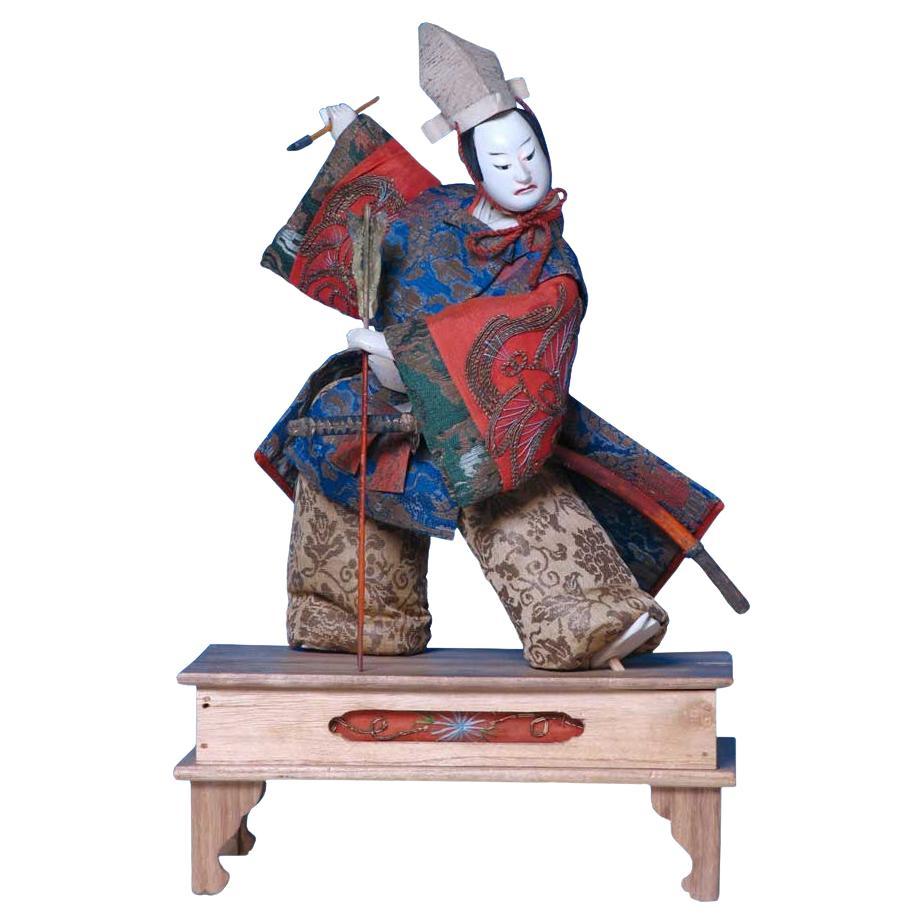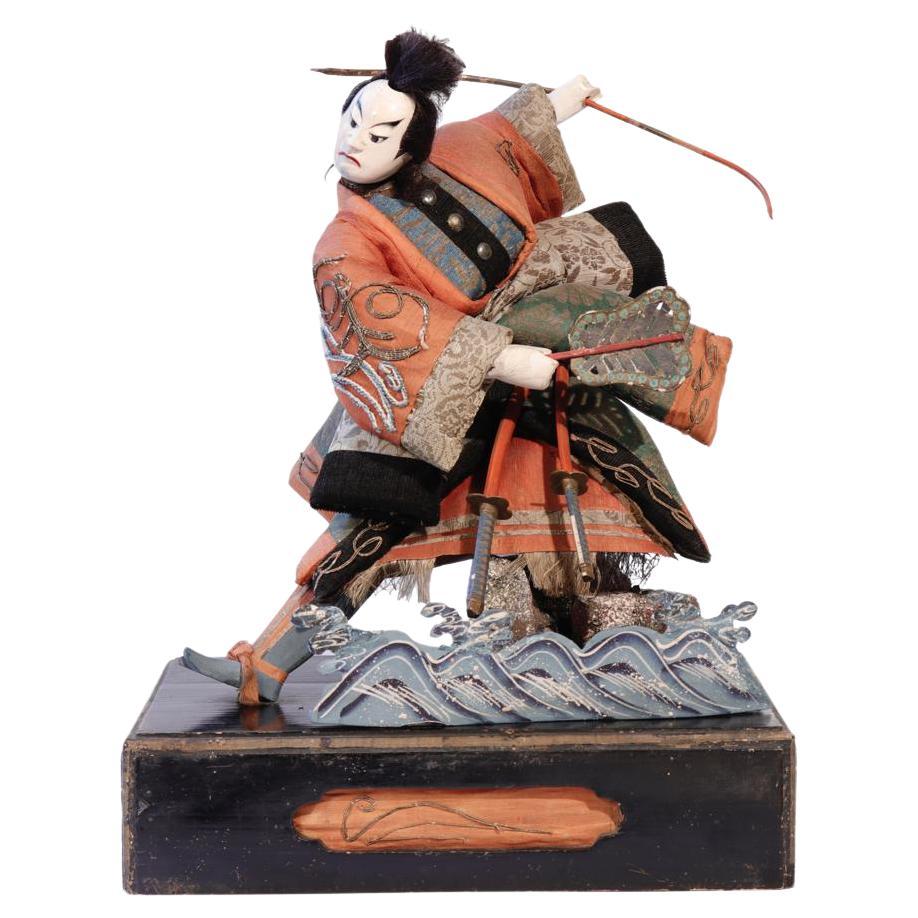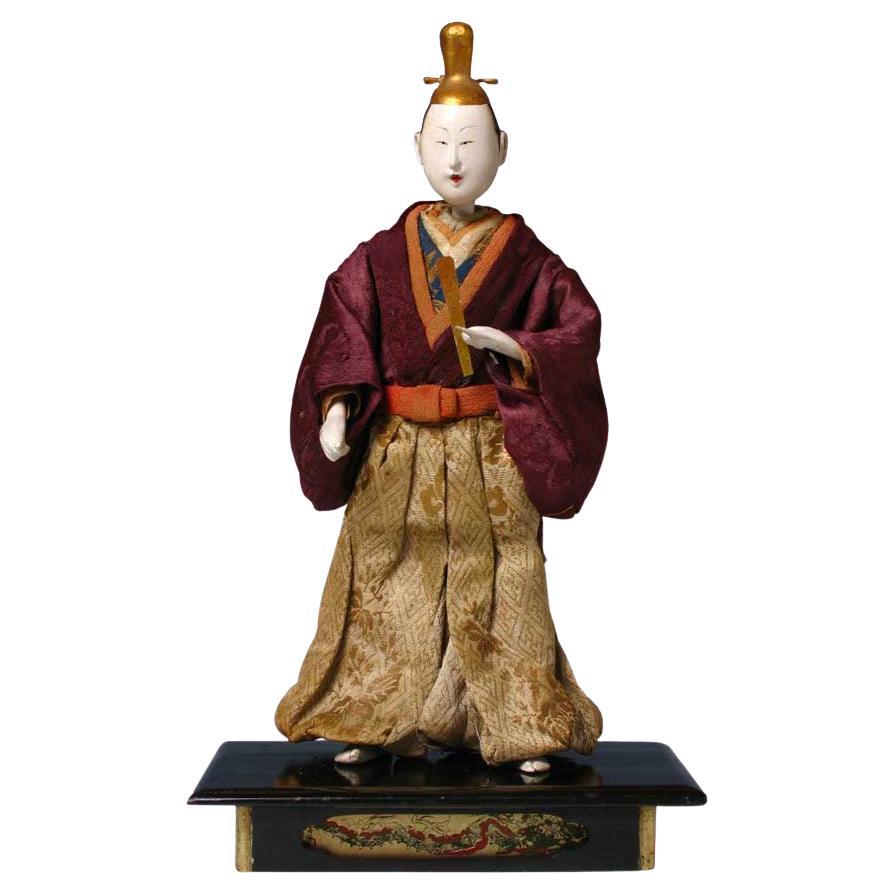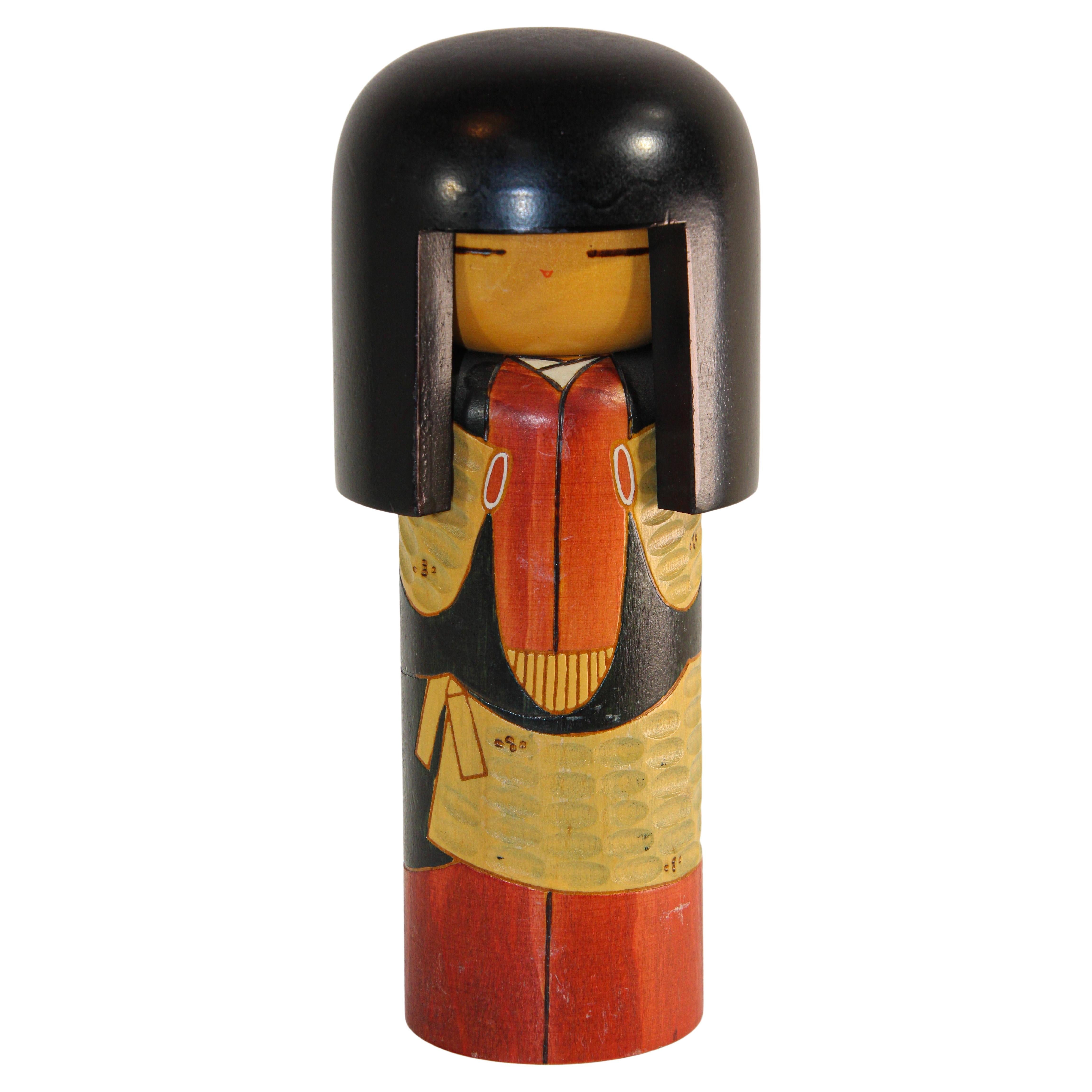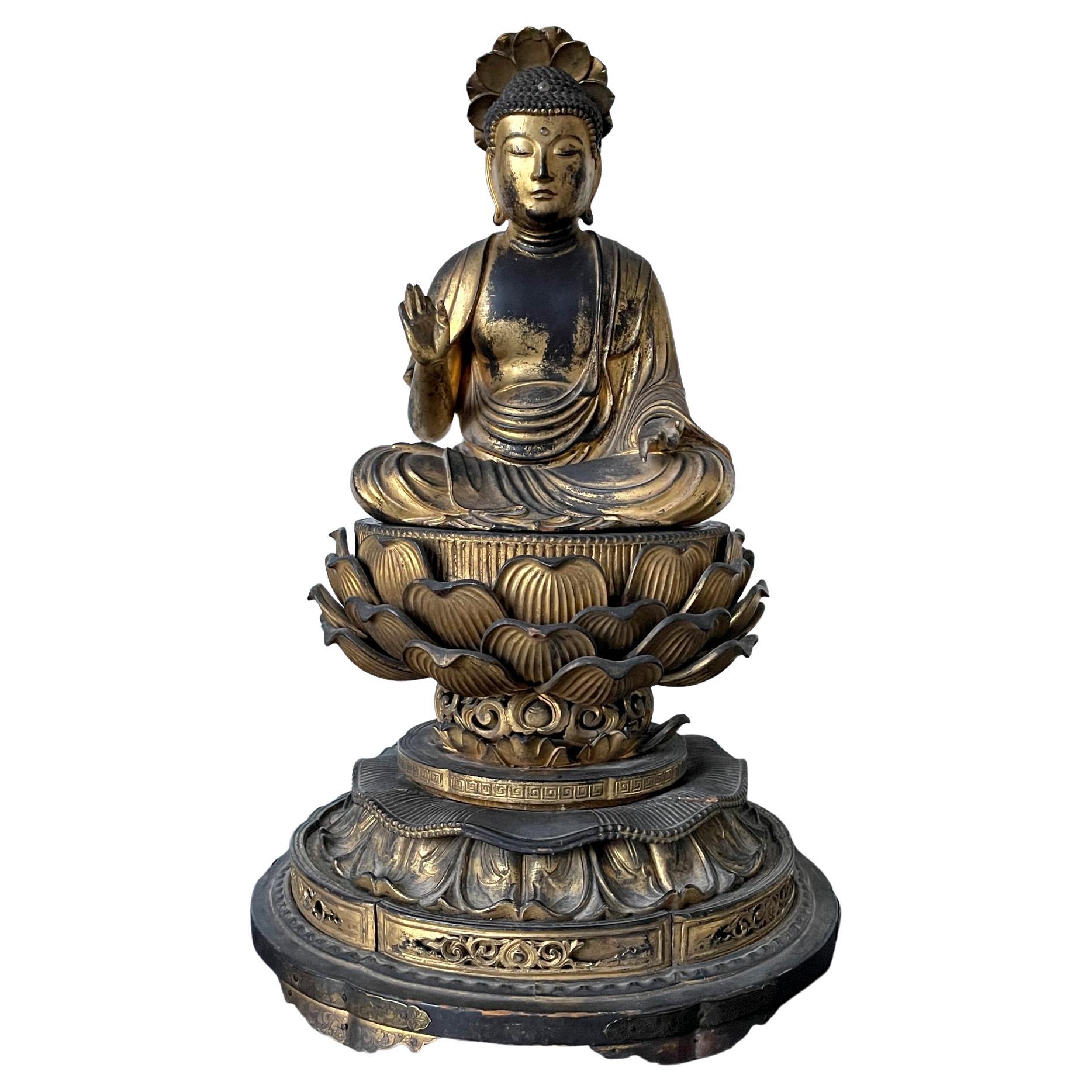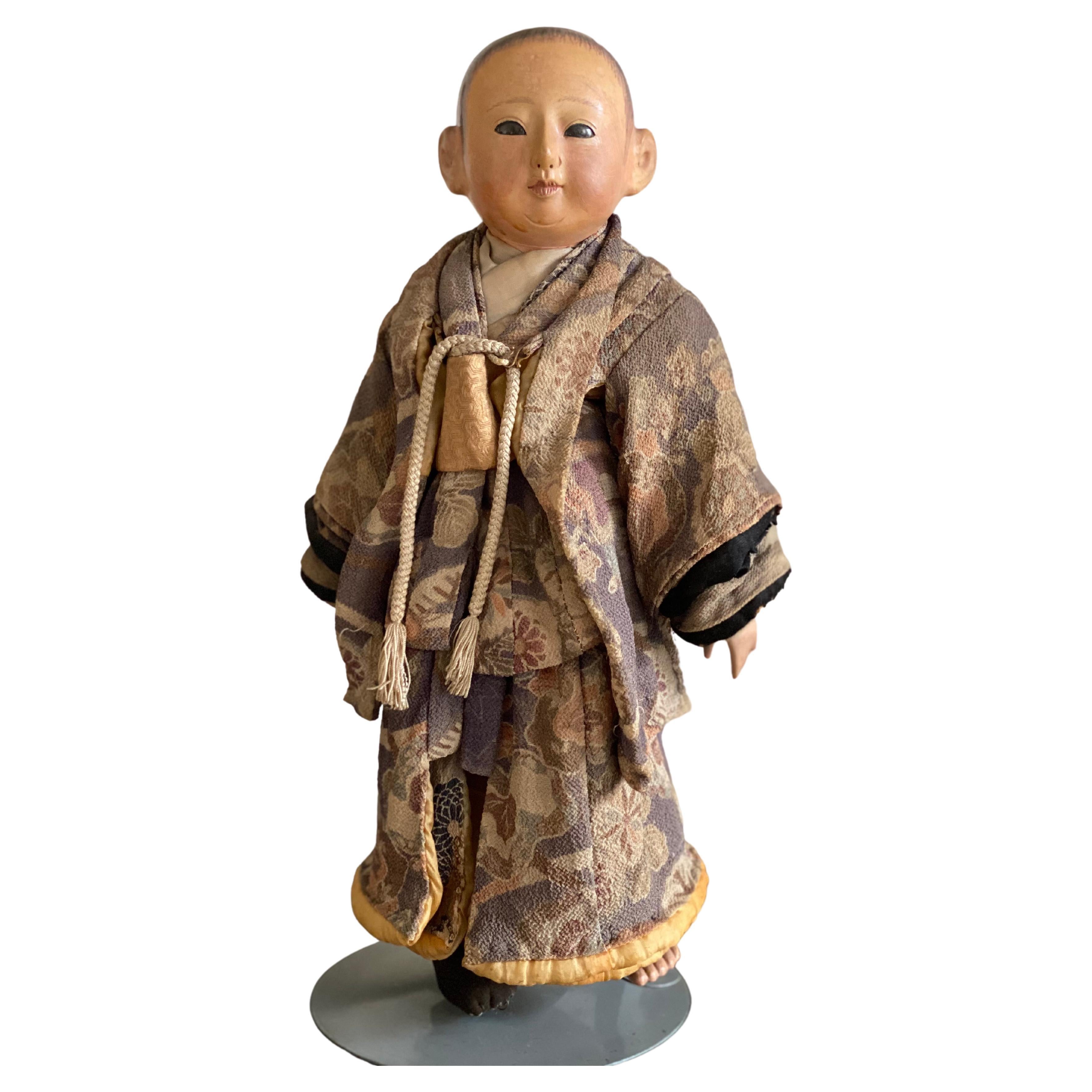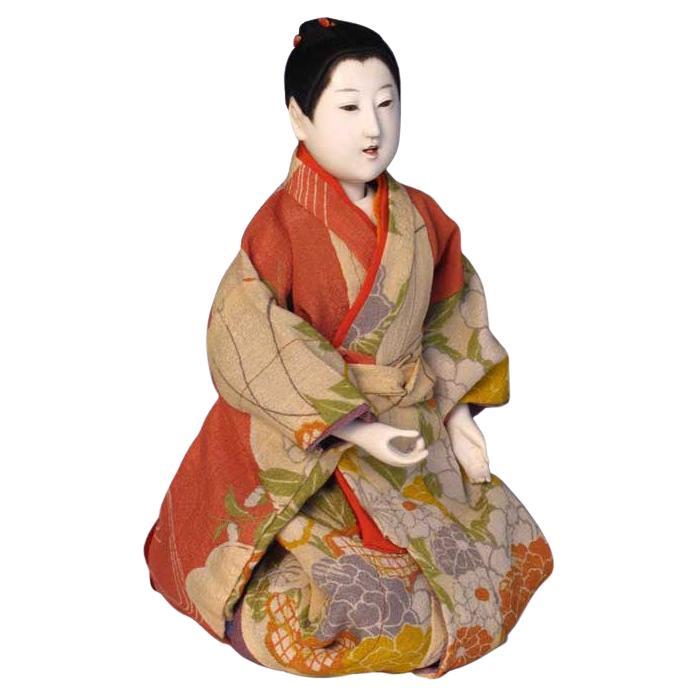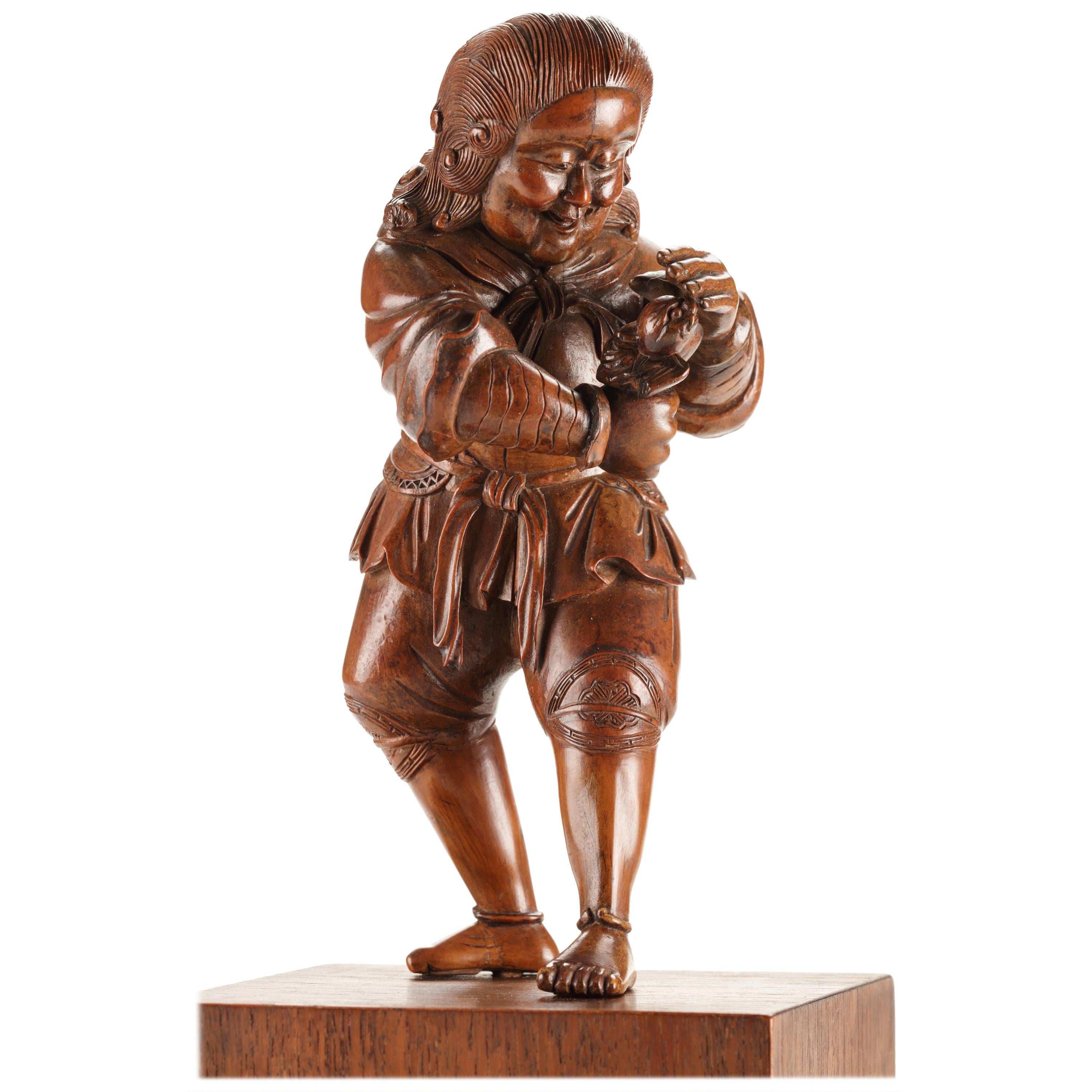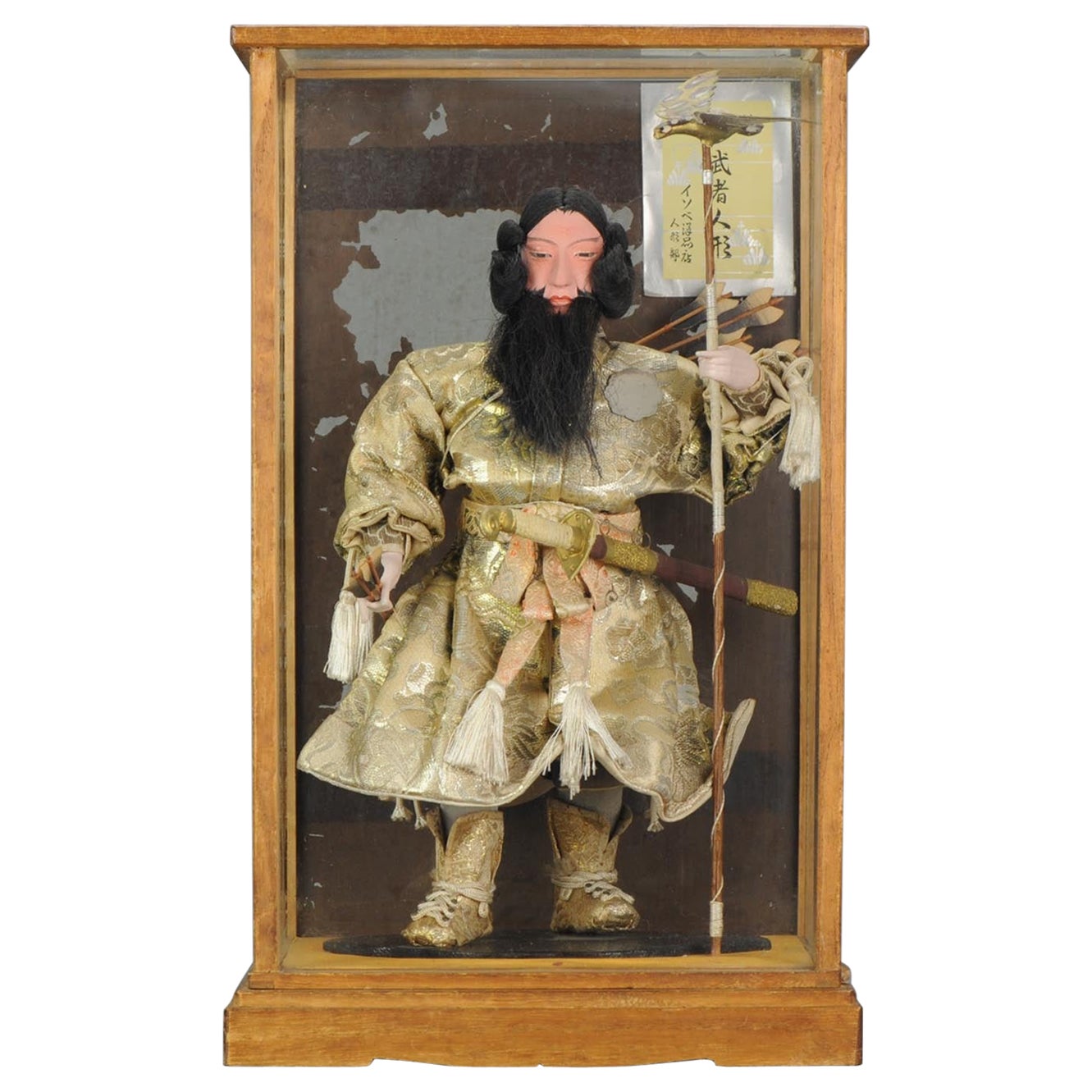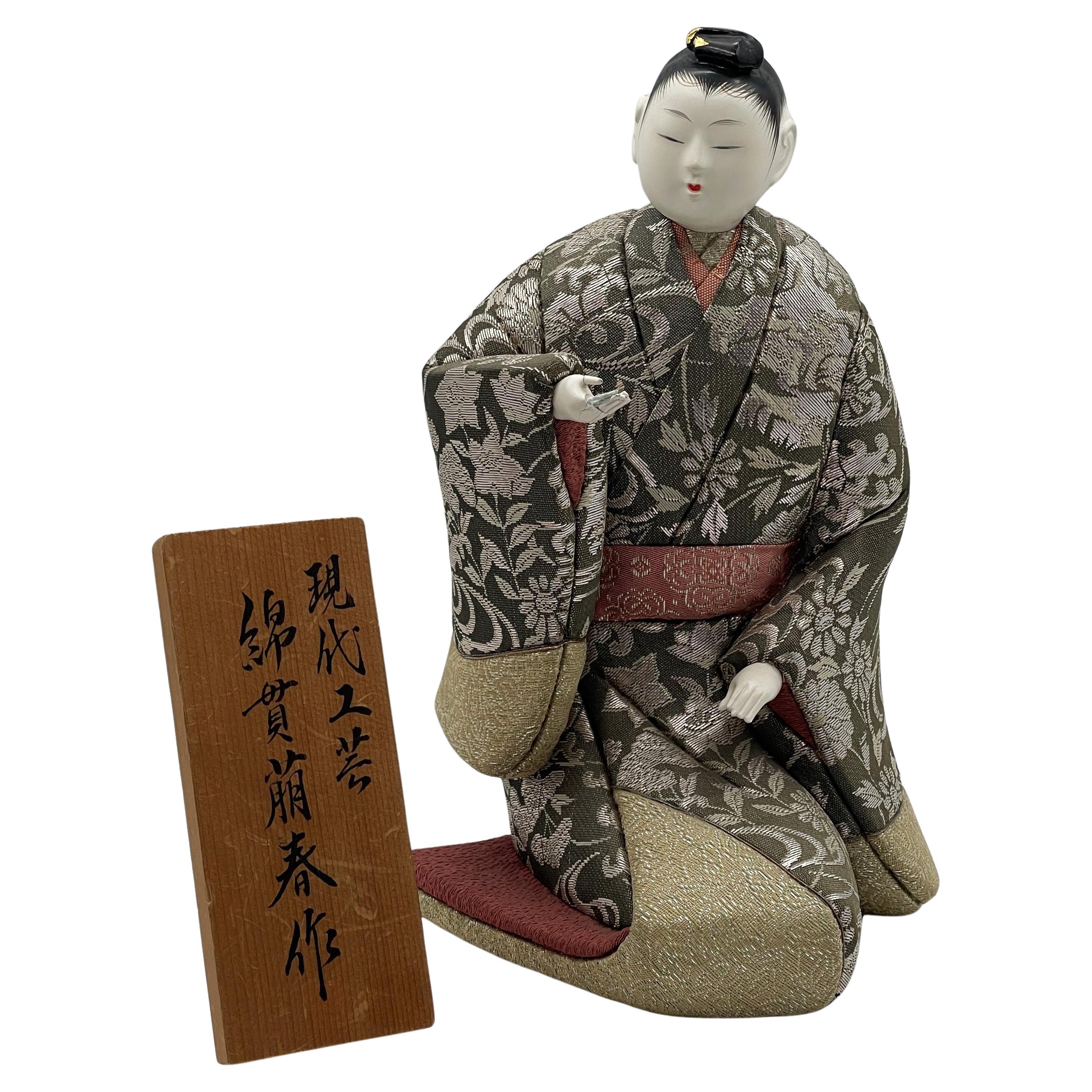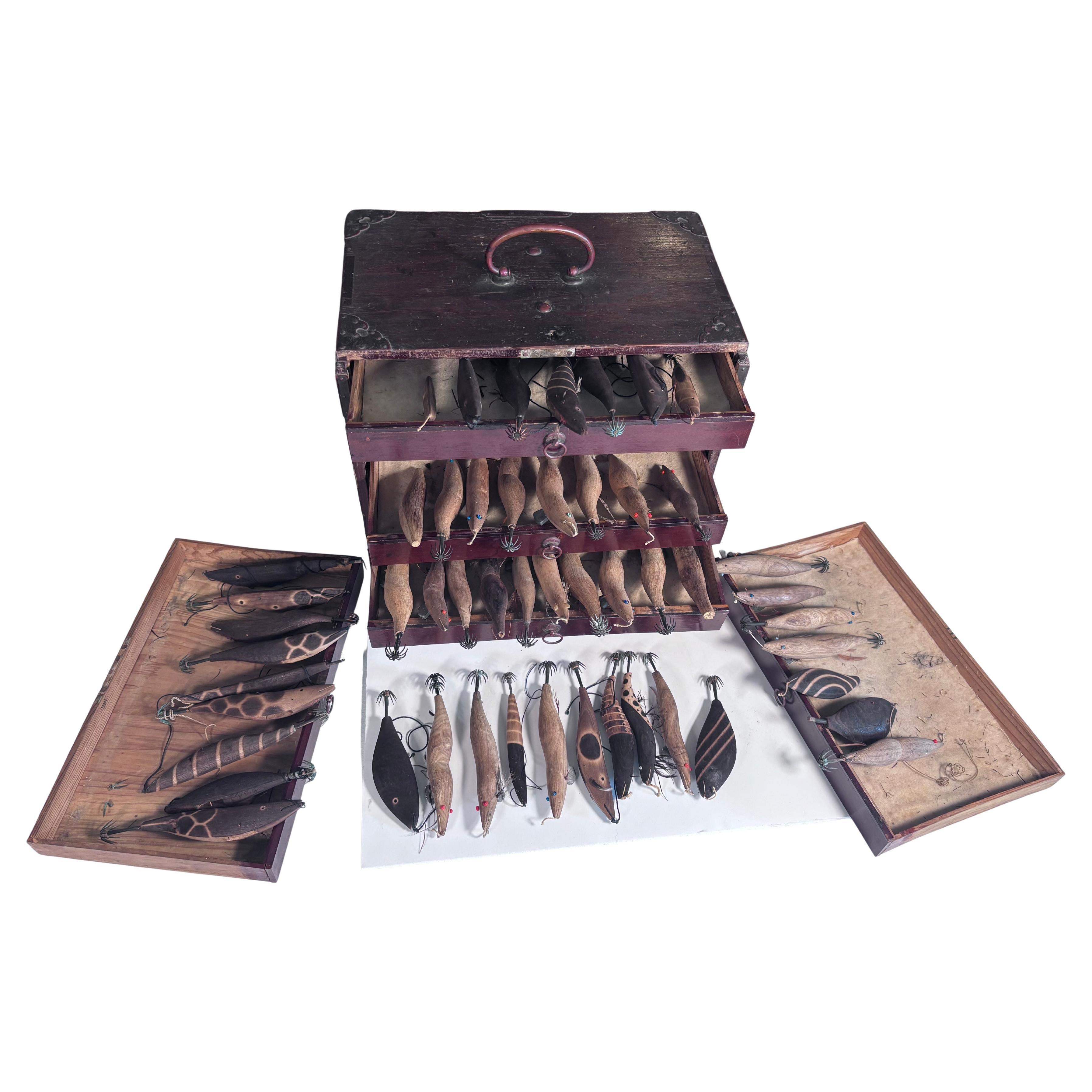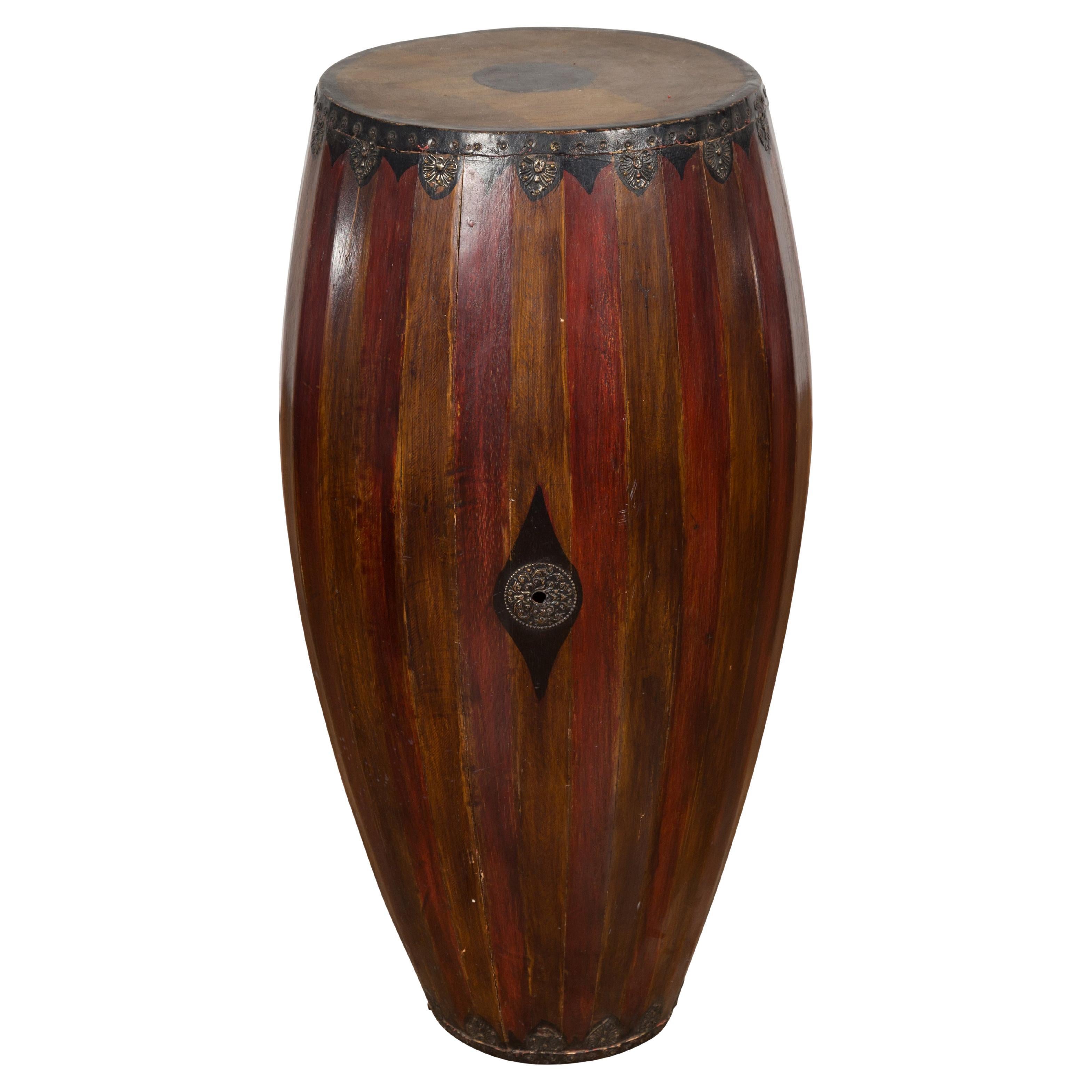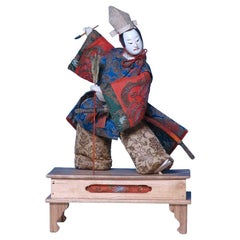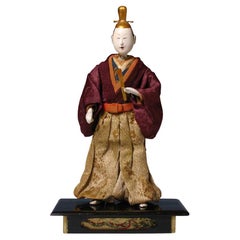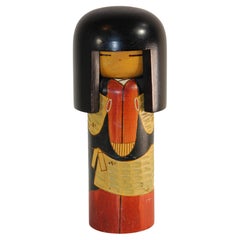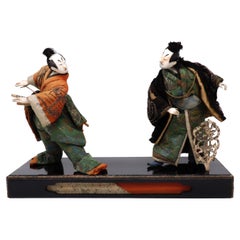
Antique Japanese Takeda Ningyo Doll Set of Two Kabuki Actors on the Stage
View Similar Items
1 of 8
Antique Japanese Takeda Ningyo Doll Set of Two Kabuki Actors on the Stage
$1,600List Price
About the Item
- Dimensions:Height: 10 in (25.4 cm)Width: 14.5 in (36.83 cm)Depth: 5.13 in (13.04 cm)
- Style:Edo (Of the Period)
- Materials and Techniques:
- Place of Origin:
- Period:1800-1809
- Date of Manufacture:circa 1800
- Condition:Wear consistent with age and use. Minor losses. Signs of age, deterioration of black birodo textile revealing the wire, paper and cotton underside, otherwise fine condition.
- Seller Location:New York, NY
- Reference Number:Seller: NH220411stDibs: LU4546217658332
Authenticity Guarantee
In the unlikely event there’s an issue with an item’s authenticity, contact us within 1 year for a full refund. DetailsMoney-Back Guarantee
If your item is not as described, is damaged in transit, or does not arrive, contact us within 7 days for a full refund. Details24-Hour Cancellation
You have a 24-hour grace period in which to reconsider your purchase, with no questions asked.Vetted Professional Sellers
Our world-class sellers must adhere to strict standards for service and quality, maintaining the integrity of our listings.Price-Match Guarantee
If you find that a seller listed the same item for a lower price elsewhere, we’ll match it.Trusted Global Delivery
Our best-in-class carrier network provides specialized shipping options worldwide, including custom delivery.You May Also Like
Antique Japanese Takeda Ningyo
Located in Point Richmond, CA
Japanese Takeda Ningyo, depicting a kabuki actor on the stage, dressed in kinran dragon & cloud brocade coat with sleeves thrown back, chirimen silk crepe sleeves of inner coat embr...
Category
Antique 1820s Japanese Edo Toys and Dolls
Materials
Wood
Japanese Takeda Ningyo of an Actor Playing a Warrior at Sea
Located in Point Richmond, CA
Japanese Takeda Ningyo depicting an actor from a Kabuki play in a role of a warrior at the sea with his anchor design embroidered on the sleeve and the stage prop waves in the foregr...
Category
Antique 1840s Japanese Edo Toys and Dolls
Materials
Fabric, Wood
Early Japanese Takeda Ningyo
Located in Point Richmond, CA
Early Japanese Takeda Ningyo, depicting an actor on stage in the role of an emperor, standing, costumed in silk and kinran brocades holding a paper scepter (shaku), the head carved o...
Category
Antique Late 18th Century Japanese Edo Toys and Dolls
Materials
Wood
Vintage Traditional Japanese Kokeshi Wood Doll
Located in North Hollywood, CA
Kokeshi or Kokashi doll handmade by Japanese artisans from wood.
The dolls have a simple trunk as a body and an enlarged head.
One characteristic of Kokeshi dolls is their lack of arms and legs.
signed underneath as follow.
Kokashi Doll Kegon Waterfall Japan 1987.
Kokeshi (???, ???), are simple wooden Japanese dolls with no arms or legs that have been crafted for more than 150 years as a toy for...
Category
Late 20th Century Japanese Japonisme Sculptures and Carvings
Materials
Wood
Japanese Antique Gilt Wood Amitabha Buddha on Loctus Throne Statue
Located in Atlanta, GA
A Japanese carved wood Amitabha (Amida) Buddha statue with residual gold leafed surface circa 19th century (late Edo period). The buddha is seated in the padmasana position on an elevated double lotus throne, under a small lotus halo canopy. His right hand is held in abhaya mudra which means fearlessness in Sanskrit. The mudra symbolizes protection, peace, and fearless. His left hand gently resting on his thigh. Dressed in a flowing robe with open chest, the statue showcases a classic iconography found prominently in Japanese Buddhism art during Edo to Meiji period, characterized by the double lotus throne and a particularly serene meditative facial expression, highlighted by inset gemstones...
Category
Antique 19th Century Japanese Edo Sculptures and Carvings
Materials
Gold Leaf
Ichimatsu Ningyo Doll from Japan Around 1890
Located in Hamburg, DE
Ichimatsu Ningyo doll is a Japanese shell limestone doll from the Meiji period. The doll body as well as the head, forearms, hands, legs and feet are made...
Category
Antique 1890s Japanese Meiji Toys and Dolls
Materials
Limestone
$1,078 Sale Price
25% Off
Recently Viewed
View AllMore Ways To Browse
Couch Velvet Carved Wood
Antique Silk Sofa
Embroidered Silk Robe
Antique Black Dolls
Antique Paper Dolls
Antique Fence Panels
Antique Silk Brocade Fabric
Japanese Wood Carving Panel
Used Iron Fence
Japanese Doll Edo Period
Antique Iron Fences
Brocade Couch
Antique Japanese Doll
Wood Lacquer Japanese Figure
Antique Japanese Wood Carved Figures
Embroidered Velvet Sofa
Antique Doll Iron
Ningyo Dolls
